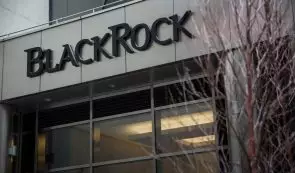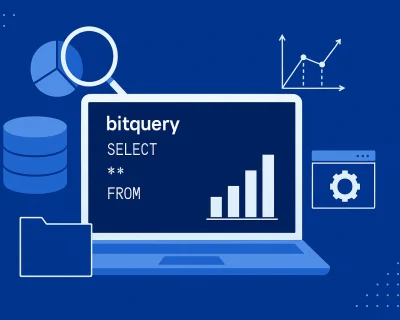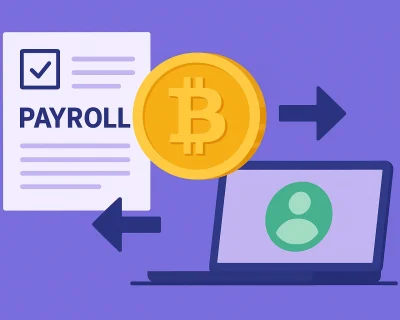Blockchain for Dummies – A Simple but Complete Guide
In a survey conducted by Deloitte on 1,386 senior executives, 80% responded that blockchain technology would be either critical (53%) or important (27%) to their organization’s strategic development. More so, 86% believe that blockchain technology is broadly scalable and will achieve mainstream adoption.
But let’s be honest, how many of us really have a clear understanding of what blockchain and its related technologies, like cryptocurrencies, really are? We might have heard about them, but when it comes to understanding their ins and outs, it’s safe to say that fewer people are truly in the know.
We understand entirely! Delving into the world of blockchain can be quite overwhelming for many. It’s not just you; many people find blockchain technology to be undeniably complex. But don’t worry; you’re not alone in feeling this way!
That’s why, in this article, we explain blockchain for dummies, going a bit into the subject of cryptocurrencies, all in a language as accessible as possible to fully understand what this revolutionary technology is all about.
So, let’s jump into it and see what blockchain is, the history of cryptocurrencies, how the blockchain works, and its benefits.
What is Blockchain? Blockchain Explained
DEF. As the name suggests, the blockchain is a chain of blocks that works as a ledger known in the financial world as records. On the blockchain, these blocks are linked together and secured through cryptography.
In simpler terms, the blockchain is a digital ledger.
Each record (block) in the blockchain contains a timestamp, information on blockchain transactions, and the previous block’s cryptographic hash value (signature). This means that each block is reliant on the previous one, and it forms an immutable chain (thus, the chain).
The “chain of blocks,” better known as blockchain, is at the core of decentralized payment systems. But what’s the connection between blockchain and cryptocurrencies like Bitcoin or Ethereum?
It’s pretty simple! The computers that support the blockchain, known as nodes, receive cryptocurrency as a reward for adding new blocks to the chain. The process of rewarding these nodes is called “consensus” (achieved by a protocol or consensus algorithm). While the specifics may vary among different blockchains, the idea remains the same across the board. The protocol dictates the rules of the blockchain.
Who Invented the Blockchain?
The first working blockchain was released in 2009. After Satoshi Nakamoto published the paper “Bitcoin: A Peer-to-Peer Electronic Cash System” in 2008, he released the Bitcoin software the following year, being the first platform that successfully used a blockchain.
But that was not the first time the idea of blockchain was introduced to the world.
In 1991, Stuart Haber and W. Scott Stornetta discussed linking blocks in an append-only data structure in their academic paper, “How to Timestamp a Digital Document.”
Types of Blockchains
There are three main types of blockchains:
Public Blockchains
Public blockchains are open-source networks anyone can join as a user, developer, or member. Every transaction on a public blockchain can be seen and examined by anyone.
One of the main advantages of public blockchains is their resistance to censorship.
They are fully decentralized, and they record transactions on several computers worldwide. Thus, changing the data on the network is impossible.
Examples of public blockchains are Bitcoin, Ethereum, and Litecoin.
Private Blockchains
Private blockchains, on the other hand, place restrictions on who can join them. Also known as permissioned blockchains, they record their transactions privately, making them available to network participants only.
When compared to public blockchains, permissioned blockchains are more centralized. The entity running the chain has full control over who joins its network. This makes private blockchains ideal for businesses that want to share their data but protect sensitive information.
Examples of private blockchains include Ripple and Hyperledger.
Consortium Blockchains
Consortium blockchains, also known as federated blockchains, combine the best of both worlds. They are more decentralized than private blockchains but allow control over public and private data.
Unlike private blockchains, controlled by one company, federated blockchains are controlled by a pre-selected set of entities/nodes.
SIDENOTE. Blockchain nodes are devices (computers, laptops) that act as servers storing information. Nodes are an essential part of the blockchain’s infrastructure.
Blockchain Consensus Mechanisms
There are two main types of consensus mechanisms:
Proof-of-Work (PoW)
Proof-of-Work (PoW) is a way to make sure that transactions are valid and added to the blockchain.
Since cryptocurrencies work on a decentralized network without a central authority, PoW checks and ensures the honesty of incoming transactions.
Miners use PoW to add new legitimate data to the blockchain. When miners verify the transactions, they get rewarded with cryptocurrency. The PoW algorithm uses computational power to complete and add new blocks to the blockchain. This makes decentralized networks trustworthy.
When a transaction needs validation, the first miner to solve the problem can add it to the blockchain. But they only get their reward after other participants confirm the data is reliable.
PoW requires special equipment that often uses a lot of energy. For instance, mining just one BTC needs as much energy as an average US household would use in about 13 years.
Proof-of-Stake (PoS)
Proof of Stake (PoS) is another way of verifying transactions, different from Proof of Work (PoW).
With PoS, a validator is chosen based on how much of a specific crypto they own and are willing to lock up (through a process called staking).
After adding a new block, stakers can validate new transactions and get rewarded for it. But if a validator doesn’t do their job correctly, they may lose part or all of their stake.
Some well-known cryptocurrencies like Cardano and Solana use the PoS system. Even Ethereum recently shifted to using PoS, which is more eco-friendly since it doesn’t need heavy computer hardware as PoW does.
How Does the Blockchain Work?
We will use the Bitcoin blockchain as an example to explain better how a blockchain system works.
How are New Blocks Created and Chained Together?
We mentioned earlier that each block contains a record of Bitcoin transactions. Every block on the blockchain can hold around 1 megabyte of data. After that block gets filled up, a new block is automatically created.
Let’s write down some hypothetical transactions and see what a block looks like.
Let us say that Zeus owes Odin some money, and he wants to pay him back in Bitcoin. So, Zeus transfers 0.5 BTC to Odin.
Like the good father he is, Odin decides to send some pocket money to his sons, Loki and Thor.
Loki gets 0.1 BTC, but Thor gets 0.2 BTC because Odin always loved him more.
This gives us the following transactions:
- T1: Zeus – Odin | 0.5 BTC
- T2: Odin – Loki | 0.1 BTC
- T3: Odin – Thor | 0.2 BTC
Now let us say that all these transactions make up 1 MB of data, thus filling up a block – Block 1. This block is automatically assigned a signature – say ASG4.
This is what our first block looks like.
Now let’s create a second block.
After a legendary battle with the frost giants, Thor needs to repair his mighty hammer. So, he sends it to Asgard’s Forge and pays 0.1 BTC.
Loki wants to make fun of Thor’s new dad bod, so he orders 100 cheeseburgers and a diet Coke from Asgard’s version of Wendy’s. This costs him a total of 0.04 BTC.
Thus, we have the following transactions:
- T1: Thor – Asgard’s Forge | 0.1 BTC
- T2: Loki – Asgardian Wendy’s | 0.04 BTC
Besides these transactions, Block 2 also includes the signature of Block 1 – ASG4. Then Block 2 receives its signature based on the data it contains. Let us say FUN27.
As more transactions happen on the blockchain, more blocks get created, each block containing the signature of the previous one. This way, Block 1 is directly linked to Block 2. Block 2 is then linked to Block 3. Block 3 to Block 4, and so on.
But what if someone decides to alter the data in Block 1?
Let us say that Loki, mischievous as he is, wants to cause some trouble. He changed the amount of Bitcoin Thor got from Odin from 0.2 to 0.3. This way, Thor must account for the money he did not receive.
And here’s where things get complicated. Now that the data in Block 1 is different, the signature generated based on the data in the block changes automatically. So instead of ASG4, the new signature becomes, let us say, ERR2.
Given that this signature is included in Block 2, the string of data also changes, thus altering the signature of Block 2 from FUN27 to OOPS42.
This triggers a domino effect where every signature of every block in the chain is changed. Once users realize that someone is trying to change the data in the blocks, they reject the changes and shift the blockchain back to their previous valid version.
So How are Signatures Created?
To be honest, the process itself is pretty complicated. Most of this still sounds like black magic, so we will stay out of the supertechnical stuff.
But in simple terms, a cryptographic hash function (a complex algorithm) takes a string of data (the transactions in the block) and converts it into a unique 64-digit string. There are several such hash functions online that you can play with – we’ll be using this one for our example.
By adding the data from our first block in the hash generator, we get the following string:
786A832913348D9BB6E35ABF60CB451934F58A9E648CA2E28724A04AACEEBB6C
If a single character in the input data changes, the output will be completely different. So, if Loki changed that 0.2 BTC to 0.3 BTC, our output would be this:
E69CC8EF3A3B3D569C6DCE67445B3699C3B01FDE588C27ED4AF34DCDAAC8D774
This is why the integration of the signature of Block 1 (ASG4) into the data of Block 2 makes it impossible to alter the blockchain. The signature of each previous block is used to create the signature of the next one.
Where Does Mining Come In?
Contrary to popular belief, crypto mining is not about creating new Bitcoin.
Miners compete with each other to validate the transactions in every block, making sure that each block on the chain fits certain criteria.
But to understand how that works, we must first talk about nonces. Nonces are a variance added by the blockchain to each block. Their only purpose is to change a block’s hash output (signature) without altering the transactions’ data. The nonces are added because every signature of every block needs to start with a specific number of leading zeroes.
Miners then need to find the value of the nonce to validate the transactions and add the new block to the blockchain. There is no formula to calculate the value of the nonce. It is simply a process of trial and error.
And generally, the more computational power you have, the faster you can test various nonces and thus find the right value.
Decentralization of Blockchain
Now that we have a clear picture of what the blockchain is and how it works let’s talk about one of its key aspects – decentralization.
Decentralization is one of blockchain’s most commonly encountered concepts. A decentralized blockchain means no central point of control for the whole network. Instead, the network is stored in several locations throughout the world.
Vitalik Buterin, the co-founder of Ethereum, separates decentralization into three different types:
- Architectural (de)centralization – how many physical devices is a system made up of?
- Political (de)centralization – how many individuals or organizations control those devices?
- Logical (de)centralization – is the whole network monolithic and organized, or chaotic and disorganized?
Using these types, he then classifies various technologies and institutions. He defines the blockchain as politically decentralized, architecturally decentralized, and logically centralized.
What about DLT?
Many believe that blockchain and distributed ledger technology are one and the same thing. But that isn’t quite right.
Distributed Ledger Technology is a decentralized technology that stores its databases in several locations, on several devices, owned and controlled by different individuals or organizations.
The main difference between the two is that DLT is a technology, and the blockchain is a type of DLT.
The decentralization of distributed ledgers aims to end the need for a central authority that processes or validates the transactions on the network. This reduces the risk of the system being compromised in an attack.
A Brief History of Cryptocurrency and Bitcoin: Why is Blockchain Important for Cryptocurrencies
Before getting into more details and seeing how the blockchain fits into cryptocurrency, let’s find out a piece of the history of cryptocurrencies – from how it started to where it is today for a better understanding of the details to follow.
First of All, What is Cryptocurrency?
To simply put it, a cryptocurrency is a digital currency. But cryptocurrencies are created, secured, and verified via cryptography, unlike regular currencies such as the Euro.
Cryptocurrencies can never exist physically because all their data is stored in distributed digital ledgers (on the blockchain). Without these ledgers, the entire system would not be able to function.
The Pre-Bitcoin Era
To understand the history of cryptocurrency evolution, we must take a quick trip from “prehistory” to 1983. Back then, computer scientist and cryptographer David Chaum developed the first anonymous electronic cash application – eCash.
eCash allowed people to store their money in a digital format and have it signed by a bank with cryptography. They could then spend the money at any shop that accepted it without needing an account with the vendor.
At that time, this seemed primitive, but it revolutionized transactions and offered a safer way for small stores to conduct business.
In 1989, Chaum integrated this system into his company, DigiCash Inc. DigiCash made electronic payments untraceable and set the groundwork for anonymous transactions.
SIDENOTE. Besides DigiCash, two other electronic cash systems were previously created, b-money and Bit Gold (not to be confused with the Canadian company BitGold). But their developers could not ensure the safety and transparency of the transactions, so the projects were never completed.
But that was only the beginning.
Almost 20 years later, everything would change with the publication of a single whitepaper.
Satoshi Nakamoto and the Creation of Bitcoin
In October 2008, a developer (or group of developers) called Satoshi Nakamoto published a paper titled “Bitcoin: A Peer-to-Peer Electronic Cash System.” That’s how the history of cryptocurrency starts.
Three months later, on January 3, 2009, they released the first Bitcoin software, and Nakamoto mined its genesis block (the first Bitcoin block) for a reward of 50 BTC.
This event marked the milestone for the first cryptocurrency and the first generation of blockchain.
And thus, a new type of transaction was introduced.
But this one was different.
Unlike eCash, Bit Gold, and b-money, Bitcoin was decentralized. This means that all its transactions were recorded and distributed across a vast network of millions of computers.
The decentralization of Bitcoin meant no central governing authority, such as a bank or a government.
One year later, in mid-2010, Nakamoto handed over control of Bitcoin’s source code repository and the network’s alert keys to Gavin Anderssen, one of the lead developers in the Bitcoin project.
He also transferred various project domains to important Bitcoin community members and stepped down from the Bitcoin project.
The Early Years and the Emergence of Altcoins
In the early years, Bitcoin represented the whole crypto industry. There was no other crypto coin, and Bitcoins were mined only by a small number of crypto enthusiasts without having any real transactional value.
It is said that Nakamoto mined almost 1 million Bitcoin throughout 2009, all of which are still in his original wallet.
But 2010 was the breakout year for Bitcoin. For the first time, someone made a transaction using Bitcoin. Two pizzas were purchased at the price of 10,000 BTC. At its highest value, that would amount to approximately $687,890,000.
We sure hope those pizzas were delicious.
By January 1, 2011, Bitcoin was valued at $0.30 and had a total market cap of over $1 million. 2011 was also the year that saw the creation of other cryptocurrencies, known as altcoins.
These alternative coins were very similar to Bitcoin, as they were created from Bitcoin’s open-source code. They aimed to improve various aspects of the cryptocurrency, such as anonymity and transaction speed.
The Creation of Altcoins
In April 2011, the world witnessed the first Bitcoin fork, and Namecoin was created using the original coin’s open-source protocol. Its primary purpose was to “protect free-speech rights online by making the web more resistant to censorship.”
But not all altcoins are created equal. Unlike Namecoin, which used Bitcoin’s open-source protocol, coins such as Ripple and NXT were built from scratch with their own protocol, blockchain, miners, and wallets.
What’s the Purpose of Altcoins?
Like in any other market, competition is beneficial. Every altcoin seeks to become a better version of Bitcoin by improving aspects such as transaction speed, distribution method, or hashing algorithm.
All this work pushed the industry forward bit by bit and set a new standard for the development of future altcoins.
And as one of the most prominent altcoins, Ethereum came up as the standard for Blockchain 2.0, introducing a platform for DApps and smart contracts.
The popularity growth of all cryptocurrencies helped create an online infrastructure that allows users safely trade and store their coins.
But it wasn’t all sunshine and rainbows.
The anonymity provided by Bitcoin led to the creation of massive online black markets, where people could easily buy and sell drugs, weapons, false documents, and more. One of the most renowned websites was the Silk Road, where all the transactions were done in Bitcoin.
In 2012 the first legitimate online vendors started accepting Bitcoin as a payment method, with large companies such as WordPress and Microsoft leading the way.
And this is when cryptocurrencies exploded.
In 2013, the world witnessed the first ICO (Initial Coin Offering), held by Mastercoin, which raised over 5,000 BTC with a total value of approximately $5 million. Bitcoin was worth more than $1,000 by December, closing the year at $750.
But everything seemed too good to be true. And it was.
In 2014, Mt. Gox was the largest Bitcoin exchange in the world, handling more than 70% of worldwide BTC transactions.
On February 7, they suddenly stopped all Bitcoin withdrawals, and two weeks later, the company’s CEO resigned from the board of the Bitcoin Foundation.
According to a leaked internal document, the company was insolvent, losing 744,408 BTC in a theft that went undetected for years. In an official statement, the company declared that it lost over 850,000 BTC, representing around 7% of all Bitcoins. At the time, this was worth around $473 million.
This event caused Bitcoin’s price to plummet from $850 at the end of January to $480 by April 1, dropping below $250 by August 2015.
However, in the bigger picture, this was only a minor setback.
While Bitcoin’s price was plunging, altcoins like Ethereum and NEO thrived. And even Bitcoin’s infrastructure reached a new milestone – the first Bitcoin ATM was opened in February 2014.
The Year of Cryptocurrency
The crypto industry continued to snowball throughout 2015 and 2016, but it was in 2017 that it really shined.
Bitcoin’s price skyrocketed, reaching almost $20,000 in December. Ethereum also exploded in value, starting the year at $8.20 and ending it at $755.27, with a growth of more than 9,000%.
The market cap of all cryptocurrencies in circulation passed $100 billion by June 2017 and peaked at $850 billion in January 2018.
The massive market growth of the crypto coins helped the industry rapidly gain popularity. The internet went haywire, and everyone found out about Bitcoin and cryptocurrencies. More and more people started studying blockchain technology, and countless blockchain-based projects appeared.
And even though many social platforms put up regulations or altogether banned crypto projects, the industry found support in Telegram.
And so ICOs also gained popularity and became not only a viable but a highly efficient method of raising capital for tech companies.
What Happened After
The history of cryptocurrency does not end so fast, but it just began.
After such growth, the cryptocurrency market swan-dived in January 2018. Bitcoin fell under $7000, dragging all altcoins with it. A series of ups and downs followed, maintaining a resistance of over $6000.
By the end of November, the cryptocurrency market entered a long bear market.
In the summer of 2019, prices started rising again, and 2020 started with a bull market as well.
And although all cryptocurrencies faced massive liquidation in March 2020 due to the pandemic crisis, they are following a bullish trend up to today.
The Crypto Market Today
On a global level, currently, no legal regulation is established for the cryptocurrency market, so it varies from country to country.
Cryptocurrencies in the US and EU are not prohibited but not recognized as legal tender. Also, incomes from cryptocurrencies are taxed accordingly to local legislation.
The Financial Stability Board, a global watchdog that runs financial regulation for G-20 economies, took a cautious tone in responding to calls from some countries to crack down on digital currencies.
“The FSB’s initial assessment is that crypto-assets do not pose risks to global financial stability at this time,” board Chairman Mark Carney said in a letter on March 18.
In the United States, BitGo and Coinbase are approved as trusted Bitcoin custodians, and major banks such as Citigroup, Goldman Sachs, and Morgan Stanley have been preparing to enter the crypto market. However, several countries deemed cryptocurrencies illegal, including Bangladesh, Ecuador, Thailand, Russia, and Kyrgyzstan.
So, after all, is there a future for blockchain technology or cryptocurrency?
Many say yes.
For the past 11 years, the crypto industry has been steadily maturing, and there is still a lot to learn about it. A study conducted by Coinbase and Qriously revealed that over 42% of the world’s top 50 universities offer at least one course on crypto or blockchain.
While cryptocurrencies’ anonymity remains one of their strongest points, it also poses one of their greatest weaknesses.
Its potential for supporting money laundering and other illegal operations makes it hard for government organizations to support the market, yet new technologies constantly strive to solve the issue.
Furthermore, it’s important to note that even after the so-called “Cryptocurrency Buble” burst in 2018, more and more projects continued to appear, and the community always looked toward improving cryptocurrencies and blockchain.
Also, big companies started researching applications of distributed ledger technologies for business purposes using smart contracts.
And if you think that there are too many blockchain projects, don’t worry.
The technology is already moving forward to Blockchain 3.0 and focuses more than ever on blockchain interoperability with projects like AION, ICON, and Cosmos.
So How Does Blockchain Fit into Cryptocurrency?
Blockchain’s role in the crypto industry (as you can see) is pretty straightforward – it records and validates transactions. This allows the crypto world to remain anonymous, increases its security, and helps it remain transparent and immutable.
But What Does a Crypto Transaction Look Like?
Let’s go back to our earlier example.
For Zeus to send those 0.5 BTC to Odin, he first needs a wallet that can hold Bitcoin.
- Zeus opens his wallet and inputs Odin’s public key together with the amount he wants to send.
- He then types in his private key to confirm the transaction.
- Hermes, who is a miner, charges 0.00005 BTC to include the transaction in the blockchain. Think of this as a shipping fee, which is automatically included in the final amount.
- The transaction is then validated by nodes, timestamped, and added to their blockchain version.
- Odin finally receives the 0.5 BTC.
At the moment, around 480,000 BTC transactions are confirmed each day. You can watch all the transactions as they happen on blockchain.com.
Crypto Wallets
Contrary to popular belief, crypto wallets don’t actually store your crypto coins. Instead, they help you make transactions, track your balance, and, most importantly, store your public and private keys.
Your public key is like your bank account number. You share it with others so they can make deposits into your account.
Your public key is generated from your private key.
On the other hand, your private key is like a security code. You are the only one who should know it. Otherwise, people will be able to confirm transactions on your behalf. And without it, you cannot confirm the transactions or withdraw money.
Benefits of Blockchain
Blockchain technology comes with a multitude of benefits, which can have a significant impact on the way businesses perform as well as on the satisfaction of their customers.
Immutable Data
All the information stored on the blockchain is permanent. No one can change it, and no one can remove it. This allows businesses and individuals to trace all their transactions efficiently and easily.
But changing data on a blockchain is not impossible. It is just very, very difficult.
And while immutability sounds like an excellent idea (and often is), it also can cause several problems for a business. What if, by accident, sensitive data gets published on the blockchain?
The only solution to fix this is by convincing the other parties involved in the blockchain to have a “fork” – split the blockchain into two paths and move the database to one of them. But doing this on a public blockchain is next to impossible.
Yet such problems are usually avoided through blockchain’s design nature, which separates sensitive and identifying information.
Digital Freedom
Most of the data on the internet is controlled by four giant companies – Google, Microsoft, Amazon, and Meta. Every picture or video you save in the cloud or post online, every voice message or email you ever sent, your purchasing habits, and your location history are all stored on their servers.
All information on the blockchain, including transaction details, is encrypted. A public key cannot be traced back to a specific user or company, thus preventing the tracking of purchasing habits.
Security
In today’s world, security is one of the most important aspects of every technology.
A report shows that, on average, a hacker attack is carried out every 39 seconds. Credit cards, identities, and classified information get stolen daily. This leads to billions of dollars of losses each year.
But since the blockchain is a decentralized system, it has no single point of failure.
The information is stored on countless computers connected to the network, so carrying out an attack is nearly impossible. To take control of the network or alter data stored on the blockchain, you must simultaneously attack all the network’s devices.
This would need a lot of work and computational power and would prove pointless, as attacking the whole network would cause the value of the cryptocurrency to plummet.
Ultimately, the investment required to carry out such an attack would be larger than its eventual benefits.
Anonymity
The blockchain allows you to remain anonymous. Nobody can track your purchases or spending habits and link them to your personal information so they can later monetize it unless they know which public address is yours.
But even so, a system built fully on blockchain technology will not store cookies or personal information. And this is exactly why Bitcoin exploded in popularity on black markets and the dark web.
But while the blockchain can provide anonymity, remember that most websites use cookies. So even if you choose to pay with Bitcoin on a website like Amazon, they can still store your information.
Reduced Fees
The main difference between Bitcoin and banks is that Bitcoin’s fees are flat. Banks usually charge a percentage of the transferred sum, ranging from 1% to 4%. This means that on a transfer of $10,000, the bank can charge anywhere between $100 and $400.
On the other hand, Bitcoin transactions charge a flat rate, but it is based on the market value. At the time of writing, the transaction fee was $1.14. The highest transaction fee was $62.79 on April 21, 2021. That is still lower than 1% of a $10,000 transaction.
No Financial Control from the Government
Banks and governments can freeze an account without any notice if they consider it necessary. Countless people have their accounts frozen each day without understanding why.
In a blockchain network, the only person with access to your funds is yourself. Well, and anyone who has your private key (nobody else should, though). The government, your national bank, or any other institution cannot access your funds or track your transactions without knowing your private and public keys.
This means you are in full control of your money, and no institution can take that away without your consent.
Final Thoughts
As you can see, the blockchain is a pretty big thing.
The technology that powers it saw an explosion in popularity in 2017 due to cryptocurrencies, but that is slowly changing. Many businesses and individuals develop Blockchains publicly and privately, finding use cases in various industries. And that happens because of their enormous potential.
Blockchain technology has the power to change the way our society works completely.
It can completely disrupt the way the banking system works, support e-governments, and promote the usage of green energy.













